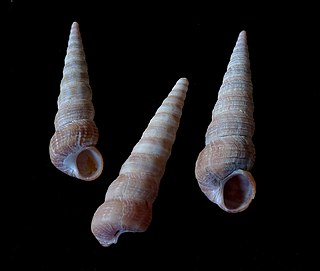
A spire is a part of the coiled shell of molluscs. The spire consists of all of the whorls except for the body whorl. Each spire whorl represents a rotation of 360°. A spire is part of the shell of a snail, a gastropod mollusc, a gastropod shell, and also the whorls of the shell in ammonites, which are fossil shelled cephalopods.

The gastropod shell is part of the body of a gastropod or snail, a kind of mollusc. The shell is an exoskeleton, which protects from predators, mechanical damage, and dehydration, but also serves for muscle attachment and calcium storage. Some gastropods appear shell-less (slugs) but may have a remnant within the mantle, or the shell is reduced such that the body cannot be retracted within (semi-slug). Some snails also possess an operculum that seals the opening of the shell, known as the aperture, which provides further protection. The study of mollusc shells is known as conchology. The biological study of gastropods, and other molluscs in general, is malacology. Shell morphology terms vary by species group.
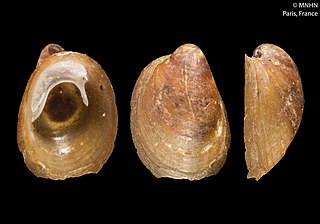
Latia neritoides is a species of small freshwater snail or limpet, an aquatic gastropod mollusc in the family Latiidae.

Achatinella byronii is a species of air-breathing land snail, a terrestrial pulmonate gastropod mollusk in the family Achatinellidae. This species is endemic to Oahu, in the Hawaiian Islands.

Trimusculus conicus is an air-breathing sea snail or false limpet, a pulmonate gastropod mollusc in the family Trimusculidae, the button snails.

Vertigo milium, common name the blade vertigo, is a species of minute air-breathing land snail, a terrestrial pulmonate gastropod mollusk in the family Vertiginidae, the whorl snails.

Seashore wildlife habitats exist from the Tropics to the Arctic and Antarctic. Seashores and beaches provide varied habitats in different parts of the world, and even within the same beach. Phytoplankton is at the bottom of some food chains, while zooplankton and other organisms eat phytoplankton. Kelp is also autotrophic and at the bottom of many food chains. Coastal areas are stressed through rapid changes, for example due to tides.

Scenella tenuistriata is an extinct species generally classified as a mollusc or hydrozoan in the family Scenellidae.

Euprotomus aurisdianae, common name the Diana conch, is a species of small to medium-sized sea snail, a marine gastropod mollusk in the family Strombidae, the true conchs.

Tryblidium reticulatum is an extinct species of a paleozoic Silurian monoplacophoran.

Pilina unguis is an extinct species of Paleozoic Silurian monoplacophoran. It was first named as Tryblidium unguis and described by Gustaf Lindström in Latin from the Silurian deposits of Gotland in Sweden, in 1880.

Helcionopsis is an extinct genus of paleozoic monoplacophoran in the family Tryblidiidae.
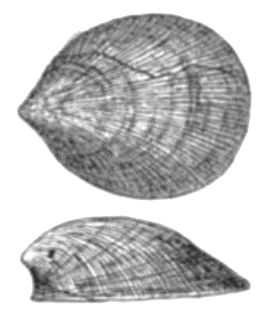
Helcionopsis striata is an extinct species of paleozoic monoplacophoran in the family Tryblidiidae.
Helcionopsis subcarinata is an extinct species of paleozoic monoplacophoran in the family Tryblidiidae.
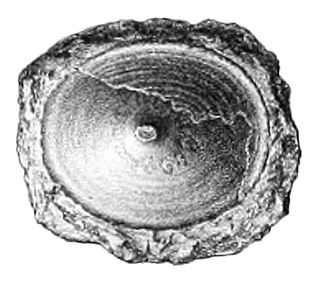
Pilina solarium is an extinct species of a paleozoic Silurian monoplacophoran. It was first named as Palaeacmaea solarium and described by Gustaf Lindström from Silurian of Gotland in Sweden in 1884.
Belomitra pourtalesii is a species of sea snail, a marine gastropod mollusc in the family Belomitridae.
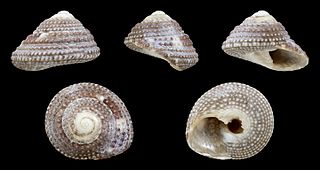
Clanculus guineensis is a species of sea snail, a marine gastropod mollusk in the family Trochidae, the top snails.

Madagasikara johnsoni is a species of tropical freshwater snail with a gill and an operculum, an aquatic gastropod mollusc in the family Pachychilidae.

Tectus royanus is a species of sea snail, a marine gastropod mollusk in the family Tegulidae.

Borsonella merriami is a species of sea snail, a marine gastropod mollusk in the family Borsoniidae.



















